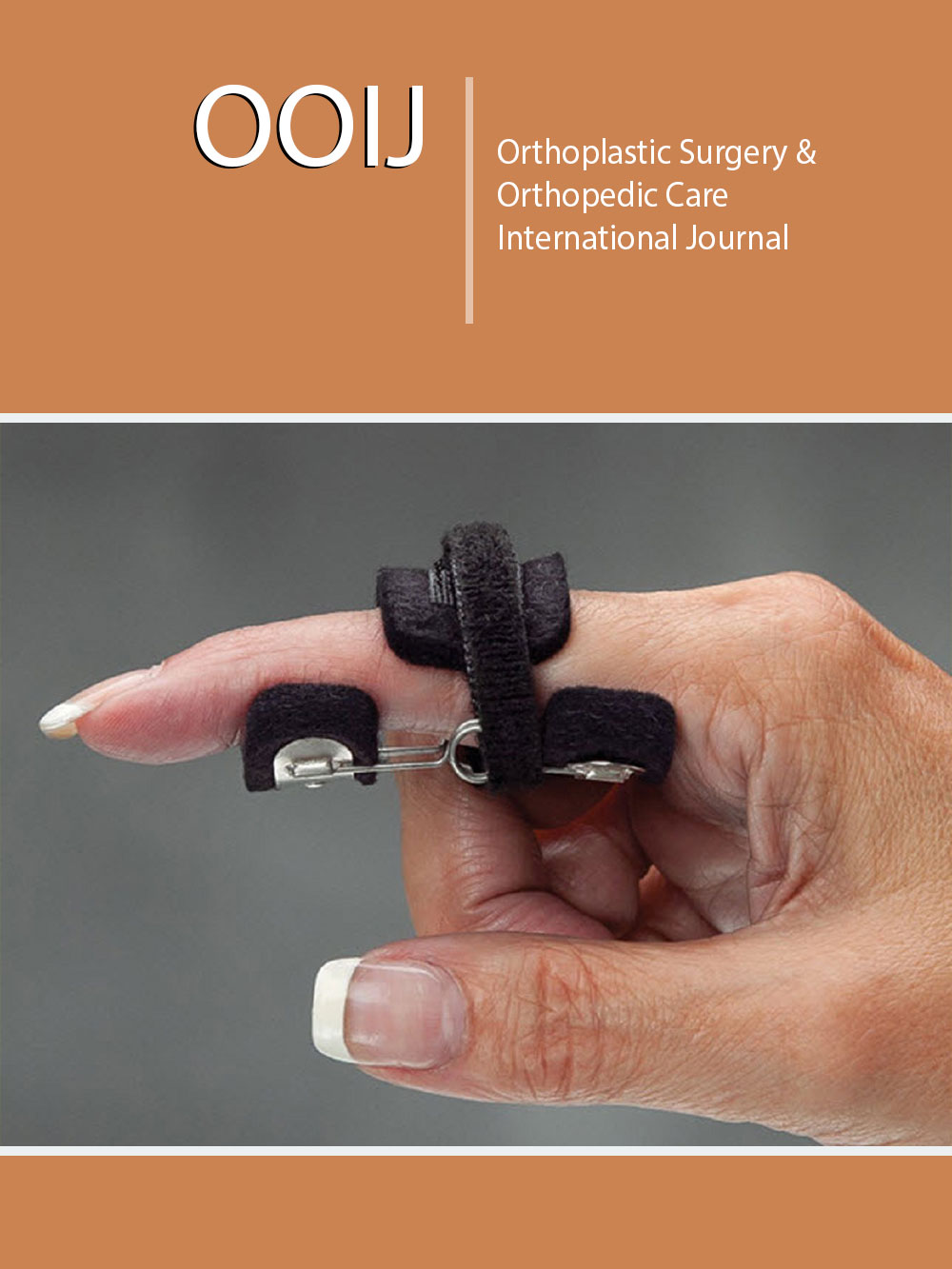- Submissions
Abstract
Orthoplastic Surgery & Orthopedic Care International Journal
Screw fixation for Lateral Condylar Fracture of Humerus in Children
-
Open or Close Byanjankar S1*, Amatya S2, Shrestha R1, Sharma JR3 and Chhetri S4
1Department of Orthopaedics and Traumatology, Lumbini Medical College & Teaching Hospital, Nepal
2Alka Hospital, Nepal
3Department of Orthopaedics and Traumatology, Anandaban Hospital, Nepal
4Department of Orthopaedics and Traumatology, Nepalgunj Medical College and Teaching Hospital, Kohalpur, Nepal
*Corresponding author: Byanjankar Subin, Department of Orthopaedics and Traumatology, Lumbini Medical College & Teaching Hospital, Palpa, Nepal
Submission: February 09, 2018; Published: February 26, 2018

ISSN: 2578-0069Volume1 Issue3
Abstract
Introduction: Lateral condyle fracture of humerus in children is the most common elbow fracture that involves the growth plate and the second most common elbow fracture children following supracondylar fracture of thehumerus. The purpose of the study was to evaluate the clinical outcome of operative treatment of displaced lateral condyle fractures using cannulated cancellous screws.
Method: We reviewed 37 lateral condyle fracture of humerus in children treated with screw fixation, from July 2014 to June 2016. Patient with age 5 to 12 years, closed fracture with displacement >2mm, fracture with enough metaphysical fragment for screw and fracture <2weeks were included. Patients with open fractures, anatomical elbow deformity, associated another injury in thesame joint were excluded. Preoperative X-rays were used to classify fracture according to Milch classification Postoperative X-rays were used to evaluate screw positions, fracture union, thepresence of growthplate arrest and avascular necrosis.
Results: There were 26 boys and 6 girls in the study, with an average age of 7.7 (peak age mode 7, range 5 to 12 years). Average follow-up was 14months (range 8 to 24 months). The commonest mode of injury was fall from height (mainly tree) and it was seen in 24 patients (75%), and 8 patients (25%) had fractures caused by motor vehicle accidents. The final outcome was evaluated with Mayo Elbow Performance score. At final follow up 90.62% (n=29) had excellent outcome and 9% (n=3) had good outcome. There were no poor results.
Conclusion: Screw provides absolute stability which reduces the possibility of lateral prominence and promotes early fracture union. Absolute stability of fracture permits anearly range of motion with early return to pre-injury state.
Keywords: Lateral condyle; Fracture; Screw fixation
 a Creative Commons Attribution 4.0 International License. Based on a work at www.crimsonpublishers.com.
Best viewed in
a Creative Commons Attribution 4.0 International License. Based on a work at www.crimsonpublishers.com.
Best viewed in 







.jpg)






























 Editorial Board Registrations
Editorial Board Registrations Submit your Article
Submit your Article Refer a Friend
Refer a Friend Advertise With Us
Advertise With Us
.jpg)






.jpg)














.bmp)
.jpg)
.png)
.jpg)










.jpg)






.png)

.png)



.png)






